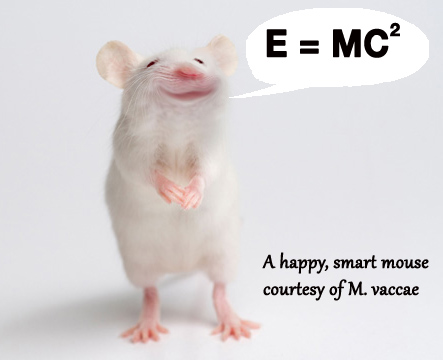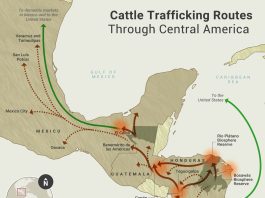We were just getting started, gathering into a loose circle in front of the barn. I began by introducing myself and my wife, Cris, and welcoming the entire group, especially those folks we didn’t really know. A young woman standing a few feet away suddenly pointed straight up, her face looking at the sky, and fairly shouted:
“Turkey Vulture!”
“Gosh, you seem pretty sure about that,” I said, looking at her quizzically.
“Oh, sorry. I’m Bethany, Andrew’s sister. I work for the Forest Service as sort of an ornithologist. I like birds a lot. Sorry.”
“Well, Bethany, that’s perfect. I’m sure we’ll have some questions for you today.”
And so, with that buzzard sighting, we began the 2018 version of our annual Ranch Walk-about, a casual day of wandering around the ranch, looking at plants and animals, soil and water, and talking about all kinds of things related to agriculture and ecology.

Before we left the headquarters, I asked each person there to say a few words about who they were and how they wound up here on a fabulously beautiful spring day. This year’s group was sort of typical, in that we had people from all walks of life: school teachers, suburban families, an airplane mechanic, a realtor, a carpenter, a medicinal plant expert, and on and on. Mack and Zach, two young boys fresh from Outdoor School, volunteered to be our scatological experts. Turned out, they were pretty good with tracks, too. A local couple were nominated to be our staff botanists. And although there was striking diversity in the group, the thirty-some members shared some commonality: every person there was interested in food, wildlife, ecology, and a love of the outdoors. We had found these folks at softball games, local pubs, watershed meetings and campfires throughout the year. When someone says they’d just love to come see what we do at the ranch, we put them on the list.
I laid out the ground rules: We would be walking for two or three hours, looking at and talking about all kinds of things. There would be wetlands (rubber boots!) and forest (Tecnu for Poison Oak!) and open meadows (sunscreen!). I would try to tell the story of what we do here, but for the most part, I was hoping the guests would provide the curriculum. I told them I was open to almost any question, and I was looking for their help, too. I asked them to report any flora and fauna sightings, although I mentioned that deer, elk and coyotes would likely not hang around for a rowdy mob of humans like this.

 And so we were off. We stopped every five or ten minutes to look at places of interest. First was the pond, surrounded by willows and cattails. The boys made their first sighting: “Blue Herron was here. Look: tracks and poop!” Someone else saw the lazy swimming motion of a whole tribe of Newts. (Don’t touch! Sort of poisonous!) At the top of a small rise we got to see some big meadows, all divided up by one-wire fences. We looked at plantations of Douglas Fir, planted in monotonous monoculture, standing in rows next to a wild patch of natural forest. We walked through the high meadow where the elk often winter, stopped at the cabin for a water break, and threaded our way back through the forest. Along the way we actually saw some cattle grazing, which led to a short lecture on the odd grazing vernacular we use: The ranch is one big grazing cell, divided up into small parcels called paddocks. We manage the grass by shifting the cattle from paddock to paddock, tracking residence time and rest time. We do this with the intent of capturing sunlight and rain, encouraging photosynthesis, growing grass, and producing red meat.
And so we were off. We stopped every five or ten minutes to look at places of interest. First was the pond, surrounded by willows and cattails. The boys made their first sighting: “Blue Herron was here. Look: tracks and poop!” Someone else saw the lazy swimming motion of a whole tribe of Newts. (Don’t touch! Sort of poisonous!) At the top of a small rise we got to see some big meadows, all divided up by one-wire fences. We looked at plantations of Douglas Fir, planted in monotonous monoculture, standing in rows next to a wild patch of natural forest. We walked through the high meadow where the elk often winter, stopped at the cabin for a water break, and threaded our way back through the forest. Along the way we actually saw some cattle grazing, which led to a short lecture on the odd grazing vernacular we use: The ranch is one big grazing cell, divided up into small parcels called paddocks. We manage the grass by shifting the cattle from paddock to paddock, tracking residence time and rest time. We do this with the intent of capturing sunlight and rain, encouraging photosynthesis, growing grass, and producing red meat.

Oh, and there was the important stuff, too:
“Look here: deer and elk and turkey tracks, all in one wet spot. And coyote tracks right along the edge!”

“Oh! Trilliums! And those little yellow violets! Dogwood trees flowering, too!”
“Gosh, the grass is so green. And the cows look so happy. How come they’re not scared of us?”

“Another snake!” This one was a pale green Racer, a rather unusual find as they are very shy, especially in crowds.
 Camas flowers and Artists’ Conks. “A perfect Morel! Someone knocked it over by accident. Can I take it home?”
Camas flowers and Artists’ Conks. “A perfect Morel! Someone knocked it over by accident. Can I take it home?”
“Look: a huge gobbler with seven hens!”
“Wait, wait…listen. I think I hear a Yellowthroat sparrow, a male. They like to skulk around wet, brushy places just like this. Yep, there he is: “Wichety-wichety-wichety!” (Thank you, Bethany)
“Hey! Blue-belly lizards, two of ‘em!”
Crossing the meadows, the tech-nerds got to play with our spring-loaded gates and I showed off the Smart tool that tells us where an electric fence might be shorting out. We looked at the super-clean water in the ditches and walked through the riparian buffers, looking at land that is trying to return to a natural state. And then my personal favorite made an appearance: a ghostly-gray Northern Harrier came floating by, intent on finding a rodent for lunch in the short grass of yesterday’s paddock.

Back at the barn, we broke out the lawn chairs, sat in the sun and drank cool drinks. I fired up the propane camp stove and soon everyone had bowls of steaming-hot chili, food lovingly produced using beef, tomatoes, onions and beans grown right here in our little valley. There were a dozen raucous conversations going at once, and I tried to listen in as people talked about food and family and water and wildlife. One interesting question came from a neighbor who trains horses for a living: “How come there aren’t any farmers here?” Good question, and one I think about some myself. The answer is, most of the people involved in commercial agriculture are simply not very interested in the things we were talking about on this day. Somehow, placing ecological issues on an equal playing field with economics and thinking about unaccounted-for costs of industrial farming methods makes those folks uncomfortable. So much so, that I just stopped inviting them. Besides, I learn a lot more from a retired D.A. or poetry professor, because they ask questions that make me think.

Eventually, a young woman came and sat next to me, a person I barely knew, and she asked me the best questions of the day: “Why do you do this? Why do you go to the trouble of having all these people here, cooking for us, letting us poke around here on the ranch?”
Good questions, and ones I think about all the time. The answer is complicated, but it goes something like this:
I recently read an essay by the great agricultural philosopher Jim Van Der Pol. He advises that we can be “vectors of change”. I think American agriculture is struggling, fighting to survive a model that leads to the degradation of our precious resources and also is severely disconnected from natural systems. I think our society — my community– deserves to know that there are agricultural systems that result in clear water, healthy land, plentiful wildlife and clean food. I feel compelled to share this with my neighbors; I want to be a vector of change. The Ranch Walk-about is my little attempt at reaching out, demonstrating a path that I believe is fundamental to the health of our land and our people.
 And, of course, it doesn’t hurt that this is the most entertaining day of the year for my family. Seeing our land make people outrageously happy is just wonderfully fulfilling. Maybe you should consider doing a little outreach on your own place. “Wichety-wichety-wichety!,” indeed!
And, of course, it doesn’t hurt that this is the most entertaining day of the year for my family. Seeing our land make people outrageously happy is just wonderfully fulfilling. Maybe you should consider doing a little outreach on your own place. “Wichety-wichety-wichety!,” indeed!
Happy Grazing!





This was one of the most encouraging articles I have read in a long time. Thank you very much.
Comments are closed.